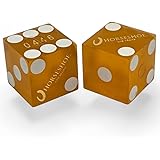Mastering the Craps Table: A Refined Approach to 6 and 8 Bets and Don’t Pass Strategy
Do you frequently consider how strategic betting alignments can optimize your craps outcomes, potentially shifting the probabilistic landscape in your favor? As observed in the preceding video, a seemingly straightforward craps strategy often centers on judiciously placing wagers on the numbers six and eight. This elementary approach, while seemingly uncomplicated, merits deeper investigation into its underlying mechanics and sophisticated applications, particularly when integrated with other foundational bets such as the Don’t Pass line.
The essence of a profitable craps strategy, as elucidated, frequently involves an astute understanding of dice probabilities and payout structures. It is imperative that players comprehend how certain bets are constructed and what their inherent house edge implications might be. This comprehensive analysis will therefore dissect the rationale behind combining Place bets on six and eight with a Don’t Pass wager, thereby offering a more granular perspective on risk mitigation and potential profitability at the craps table.
The Foundational Pillars: Understanding 6 and 8 Place Bets
Place bets on the numbers six and eight are widely regarded as cornerstones of many craps strategies. These specific numbers are statistically the second most frequent outcomes when two dice are rolled, trailing only the ubiquitous seven. Each number can be formed in five distinct ways (e.g., 1-5, 2-4, 3-3, 4-2, 5-1 for six; 2-6, 3-5, 4-4, 5-3, 6-2 for eight).
When a point is established, these bets become active, and they remain in play until either the chosen number (six or eight) is rolled, or a seven appears, thereby causing the bet to be resolved. The video demonstrated a $12 Place bet on both six and eight; this particular denomination is selected because the standard payout ratio for these numbers is 7:6. Consequently, a $12 wager is commonly placed to facilitate a convenient $14 payout, ensuring the full odds are properly remunerated without fractional chip exchanges. This strategic sizing ensures optimal returns are received for successful rolls.
The house edge associated with Place bets on six and eight is a relatively modest 1.52%, which is among the lowest in craps. This low house advantage makes these bets particularly attractive to players who are pursuing strategies designed for sustained play and incremental gains. Comparatively, other bets on the craps layout often carry significantly higher house edges, underscoring the statistical superiority of concentrating on these prime numbers.
The Defensive Stance: Integrating the Don’t Pass Line
A crucial dimension is added to this craps strategy through the incorporation of a Don’t Pass line bet. The Don’t Pass line is fundamentally antithetical to the Pass Line, positioning the player against the shooter. A Don’t Pass bet typically wins if a 2 or 3 is rolled on the come-out roll, pushes on a 12, and loses on a 7 or 11. Should any other number be rolled (4, 5, 6, 8, 9, 10), that number becomes the point. Subsequently, for the Don’t Pass bet to win, a seven must be rolled before the established point number is repeated.
The video specifically recommends placing a $36 wager on the Don’t Pass line. This amount is strategically chosen to hedge against the combined $24 placed on the six and eight. If a seven is rolled after a point has been established, which is the most probable outcome with six combinations, the Don’t Pass bet typically triumphs, delivering a profit that is intended to offset losses incurred on the Place bets. For instance, a $36 Don’t Pass bet would commonly yield $36 in winnings, effectively covering the $24 in potential losses from the six and eight, and providing a net profit of $12 if the seven is rolled before the point.
This approach transforms the individual Place bets from standalone wagers into components of a broader, more sophisticated risk management system. The Don’t Pass bet functions much like an insurance policy or a counter-balance in a financial portfolio, designed to mitigate downside risk. It is a calculated measure to safeguard against the frequent appearance of the dreaded seven, which invariably resolves most positive expectation bets unfavorably.
Probabilistic Dynamics: The Role of the Seven and Other Outcomes
The inherent probabilities associated with dice rolls are paramount to comprehending this strategy. It is an immutable fact that the number seven possesses the highest probability of being rolled in craps, having six distinct combinations (1-6, 2-5, 3-4, 4-3, 5-2, 6-1). This statistical dominance means that, on average, a seven will appear once every six rolls.
In contrast, the numbers six and eight each have five combinations, making them slightly less frequent. The number five, which was briefly mentioned in the video, possesses only four combinations (1-4, 2-3, 3-2, 4-1), rendering it less probable than the six, eight, or seven. Therefore, the strategy discussed leverages this frequency disparity by actively betting on the relatively common numbers (six and eight) while simultaneously hedging against the most common number (seven) through the Don’t Pass line.
This dynamic interplay between probabilities is critical. While Place bets on six and eight offer a favorable return, they are vulnerable to the frequent appearance of the seven. The Don’t Pass bet effectively capitalizes on this vulnerability by profiting when a seven appears after the point is established. This creates a fascinating strategic tension, wherein the player is positioned to win whether a six, eight, or seven is rolled, albeit with varying degrees of net profit depending on the sequence of rolls and the initial point established.
Strategic Execution: A Step-by-Step Overview
To effectively implement this combination craps strategy, a precise sequence of actions is necessitated. This strategic orchestration ensures that all bets are appropriately placed to maximize their synergistic potential.
-
Initiating the Come-Out Roll: The process begins with a $36 Don’t Pass wager being placed prior to the come-out roll. This foundational bet is crucial for establishing the defensive component of the strategy.
-
Establishing the Point: Should a point (4, 5, 6, 8, 9, 10) be established on the come-out roll, the Don’t Pass bet remains in play. It is at this juncture that the offensive component of the strategy is activated.
-
Placing Offensive Bets: If the point established is anything other than a six or an eight, $12 Place bets are then positioned on both the six and the eight. These bets are designed to capitalize on the high frequency of these numbers.
-
Point on 6 or 8: Conversely, if the point itself becomes a six or an eight, only one $12 Place bet is placed on the *other* number. For instance, if the point is six, a $12 Place bet is then made on eight. This modification is critical, as a Place bet cannot be made on the established point number directly; it would instead be converted into an odds bet, which carries different implications.
-
Managing Resolutions: As subsequent dice rolls occur, the objective is for either a six or an eight to appear, resulting in a payout on the Place bets, or for a seven to be rolled, which activates the Don’t Pass win. When a seven is rolled, the $36 Don’t Pass bet is paid $36. The combined $24 in Place bets on six and eight are typically lost. Thus, a net gain of $12 is realized from the Don’t Pass resolution, effectively recouping losses and securing a profit.
It is important to note that if the established point is a five, as highlighted in the video, this particular craps strategy is specifically engineered to cover potential losses from the Place bets with a Don’t Pass win, should a seven be rolled. The comparative difficulty of rolling a five versus a seven further solidifies the defensive posture adopted by this betting structure.
Refined Strategic Considerations and Long-Term Viability
While this particular craps strategy offers a compelling balance of risk and reward, its long-term viability is predicated upon an understanding of broader casino mechanics. No craps strategy can entirely eradicate the house edge; rather, effective strategies aim to minimize its impact over time, thereby prolonging play and enhancing opportunities for short-term gains. The combined house advantage of these specific bets is among the lowest in the casino, making it a theoretically sound approach for extended sessions.
Players considering this approach should also be mindful of bankroll management. The aggregate investment for this craps strategy—initially $36 on Don’t Pass plus $24 on Place bets (total $60)—necessitates a sufficient bankroll to absorb inevitable fluctuations in outcomes. Prudent players often view this strategy as a sophisticated way to navigate the inherent randomness of craps, allowing for strategic hedges against the most probable outcomes.
By dissecting the probabilities and payout structures and understanding the complementary nature of the Don’t Pass and Place bets on six and eight, players are empowered to engage with the game of craps on a more informed and strategic level. This combination craps strategy, while presented in the video as a simple profit mechanism, is in fact a nuanced arrangement of bets designed for strategic advantage.











